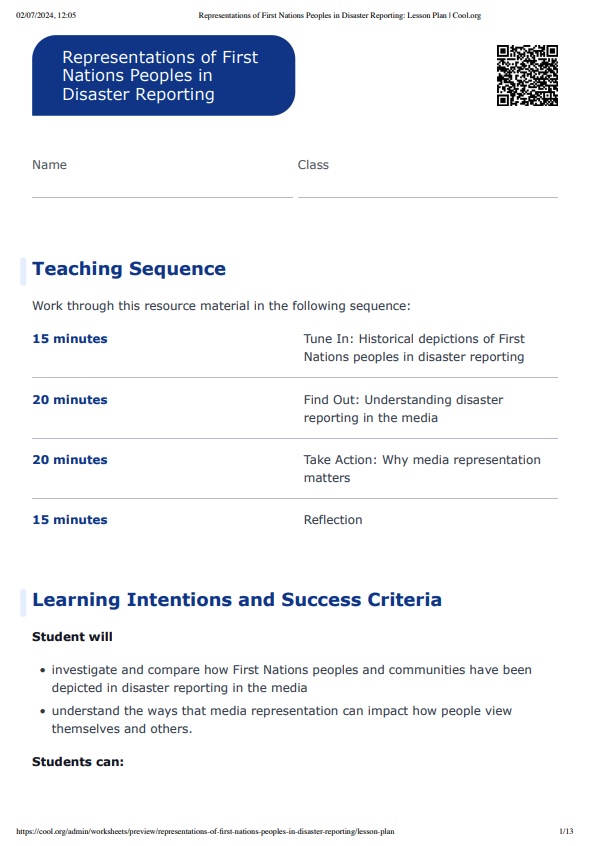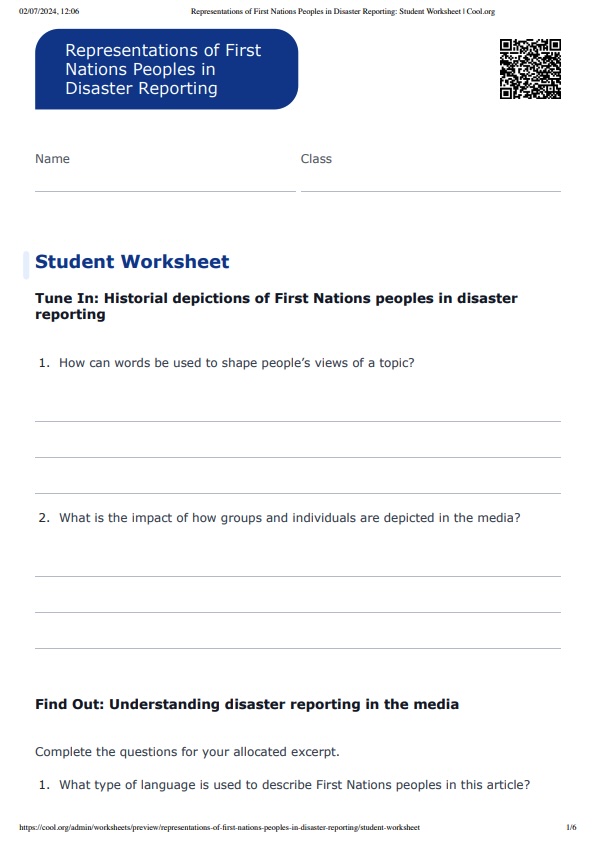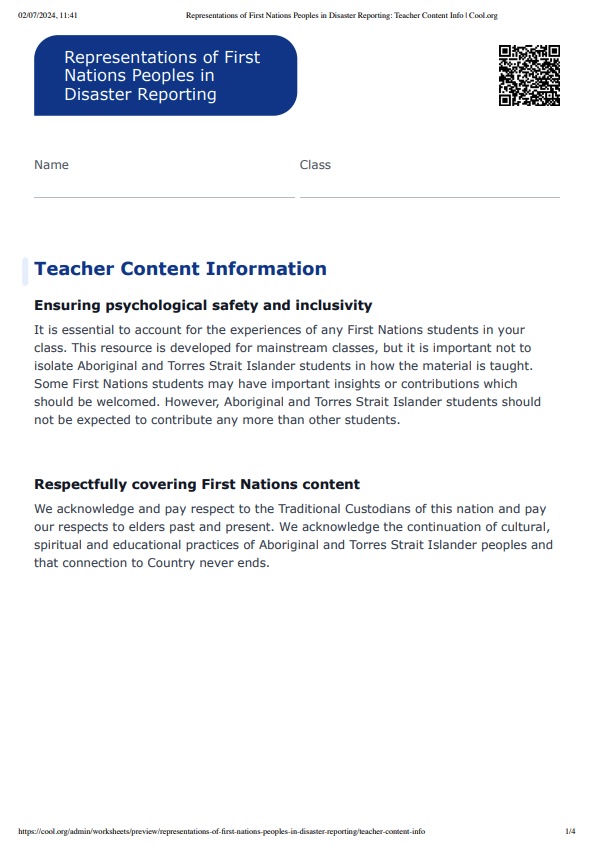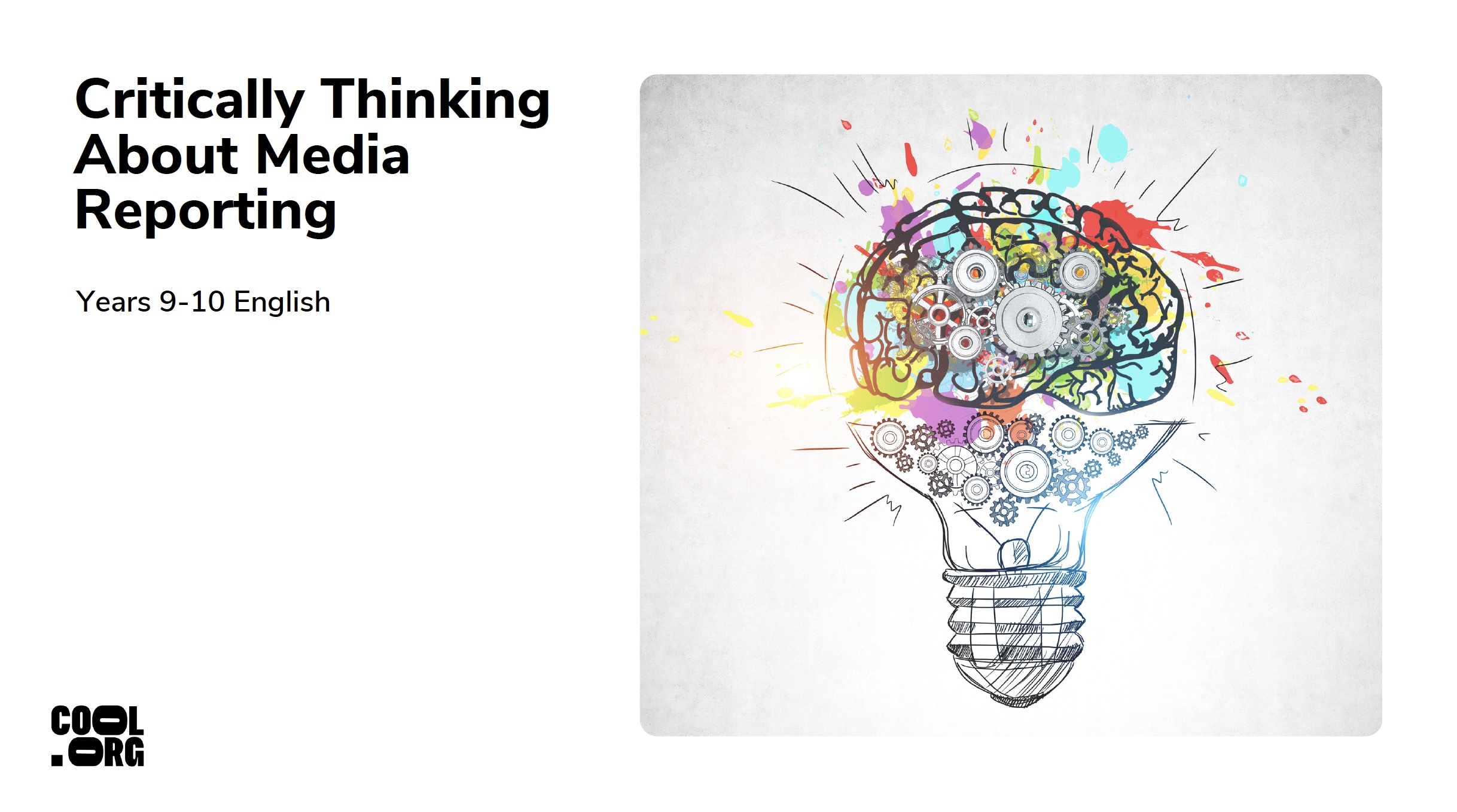Lesson summary
Students will understand how language and representation in the media can have inclusive and exclusive social effects, and can empower or disempower people. They will also critically analyse and compare the historical and contemporary representation of First Nations peoples and communities in disaster reporting in the media and the impact of this.
Learning intentions:
Students will...
- investigate and compare how First Nations peoples and communities have been depicted in disaster reporting in the media
- understand the ways that media representation can impact how people view themselves and others.
Success criteria:
Students can...
- recognise how language and depictions empower and disempower First Nations peoples and communities
- explain how empowered communities lead to better resilience outcomes
- analyse the historical and contemporary representation of First Nations peoples and communities in disaster reporting in the media and its impact.
Lesson guides and printables
Curriculum links
Select your curriculum from the options below.
Lesson details
Skills
This lesson is designed to build students’ competencies in the following skills:
- critical thinking
- collaboration
- communication
- curiosity
- digital literacy
- empathy
Curriculum Mapping
Australian Curriculum (v9.0) content description:
Year 9 and 10 English
- Recognise how language empowers relationships and roles. (AC9E9LA01)
- Understand how language can have inclusive and exclusive social effects, and can empower or disempower people. (AC9E10LA01)
Relevant parts of Year 9 and 10 achievement standards:
- Year 9: By the end of Year 9, students read, view and comprehend a range of texts created to inform, influence and/or engage audiences. They analyse representations of people, places, events and concepts, and how texts respond to contexts.
- Year 10: By the end of Year 10, students read, view and comprehend a range of texts created to inform, influence and engage audiences. They analyse and evaluate representations of people, places, events and concepts, and how interpretations of these may be influenced by readers and viewers.
NSW Syllabus outcomes: EN4-URA-01, EN4-URB-01, EN5-URA-01, EN5-URB-01
General capabilities: Critical and Creative Thinking, Ethical Understanding, Intercultural Understanding, Personal and Social Capability
Cross-curriculum priority: Aboriginal and Torres Strait Islander Histories and Cultures, Sustainability
Level of teacher scaffolding: Medium/high - Guide discussions and small group work; scaffold students to apply a range of critical thinking and media literacy skills to the analyses of media articles and disaster reporting of First Nations peoples.
UN Sustainable Development Goals
Goal 10 | Reduce inequality within and among countries
- Target 10.2: By 2030, empower and promote the social, economic and political inclusion of all, irrespective of age, sex, disability, race, ethnicity, origin, religion or economic or other status
Resources Required
- Critically Thinking about Media Reporting Presentation
- Devices for students to access online media articles
- Device to share presentation with students
- Media Analysis of Representations Rubric
- Student Worksheet
- Whiteboard
- Whiteboard markers
Additional Info
We would like to acknowledge and express our gratitude for the expertise and advice provided in the creation process of these resources from the following parties:
- The Australian Institute for Disaster Resilience (AIDR)
- Bhiamie Williamson (Monash University)
Related Professional Learning
How to Teach a Unit on Fire and Flood Resilience
Quick summary: This course will provide a roadmap for how to approach teaching a unit on fire and flood resilience. While primarily focused on fire and flood resilience, it will reference the importance of an all-hazards approach to disaster resilience education.





Welcome back!
Don't have an account yet?
Log in with:
Create your free Cool.org account.
Many of our resources are free, with an option to upgrade to Cool+ for premium content.
Already have an account?
Sign up with:
By signing up you accept Cool.org's Terms and Conditions(Opens in new tab) and Privacy Policy(Opens in new tab).